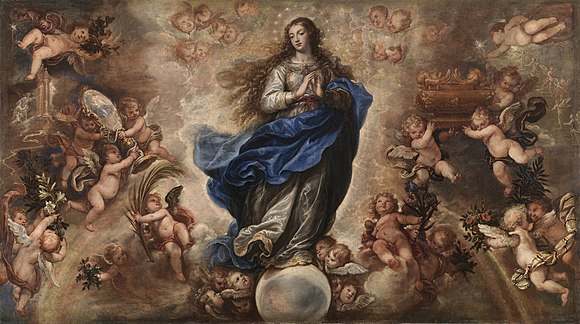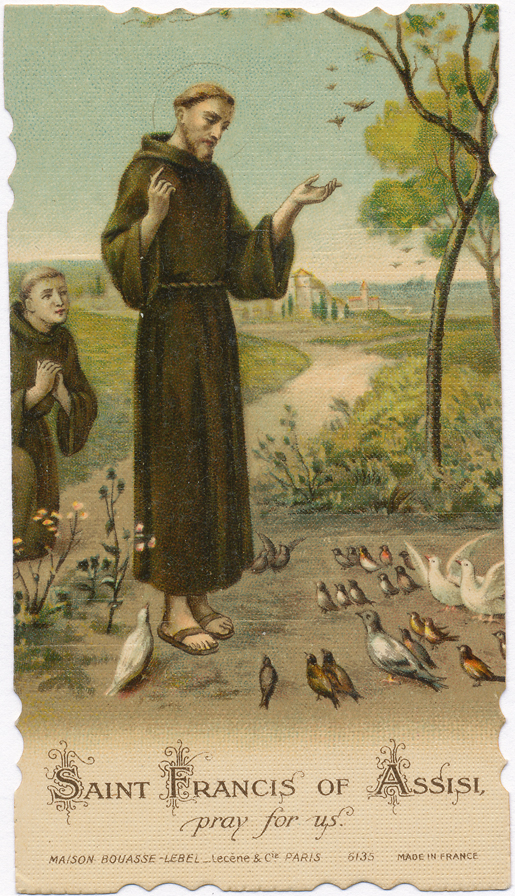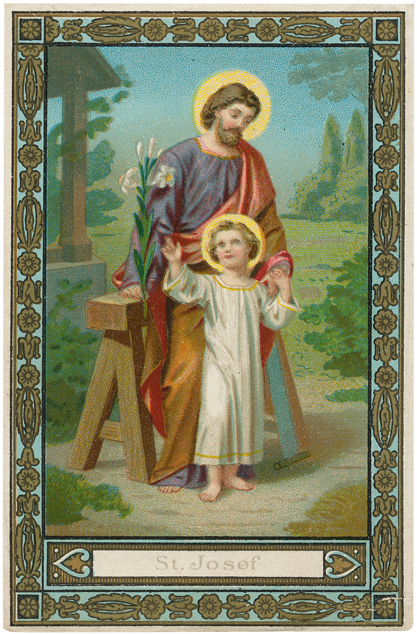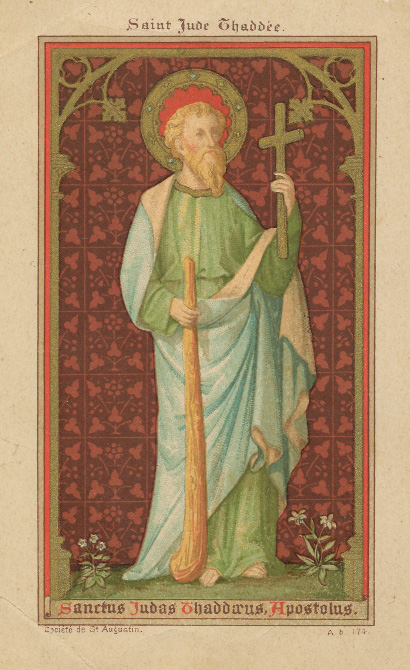We have access to several keys to help rescue the holy souls in purgatory and get them to heaven.

Joseph Pronechen BlogsNovember 2, 2019
There’s only one door out of purgatory for the Holy Souls there. It opens only into heaven. But here’s the catch: they can’t open it themselves. We have to open it for them. We have the key.
The question is, will we help unlock it for some of them during this month of November, which the Church dedicates to the Holy Souls?
Here’s the beautiful part: The Church hands us not just one key but a whole ring full of them. We can use any number of them to keep unlocking the door for the single-file lineup of souls who are suffering in purgatory.
They’re all waiting to join the saints in heaven on the other side of the door. They can get there a lot quicker if we unlock that door for them. Notice how the Church puts All Souls Day, Nov. 2, right next to Nov. 1, All Saints’ Day?
So, let’s start with some of the main keys the Church gives us to use. Some work every day, and some work only at a certain time or day, like the one that works from Nov. 1-8 specifically for the souls in purgatory. These are listed in the official Manual of Indulgences (Enchiridion Indulgenarium).
Key for Nov. 1-8
Every year on these eight days the Church grants a plenary indulgence that can be applied only to the souls in purgatory. The faithful can receive this indulgence each of the eight days to apply to a particular soul — a parent, spouse, relative, friend, or anyone even unknown.
How to use this key? On each day from Nov. 1-8 a person seeking the plenary indulgence for a soul must (1) “devoutly visit a cemetery and pray, if only mentally, for the departed; (2) on All Souls’ Day (or according to the ordinary, on the Sunday preceding it or following it…) devoutly visit a church or an oratory and recite an Our Father and the Creed.”
There are a couple of other requirements that have to be fulfilled, too, which apply to any plenary indulgence. More on this detail a bit later, since it will also apply to other keys.
Just in case, for these same dates, there is a key that is a partial indulgence (for example, maybe a person isn’t able to fulfill all the requirements for a plenary indulgence). Again, for these Nov. 1-8 days, it can be applied only to souls in purgatory and granted for (1) devoutly visiting a cemetery and at least mentally praying for the dead; (2) devoutly reciting lauds or vespers from the Office of the Dead or the prayer, “Eternal rest grant unto them, O Lord, and let perpetual light shine upon them. May they rest in peace. Amen.”
But don’t stop with only these eight days. You have all month to gain indulgences (more on requirements in a moment) to apply to the holy souls sending out their SOS’s (Stop Our Suffering). And you can help them every day of the year too, with other keys.
Mighty Keys for Every Day
These are most accessible, handy keys with a plenary indulgence attached (with the usual conditions) since they will readily open that door. These four can gain that plenary indulgence “each day of the year,” but “no more than once a day.”
- Eucharistic Adoration. “Visit the Blessed Sacrament for adoration lasting at least a half hour.”
- Praying the Rosary. “Devoutly recite the Marian Rosary in a church or oratory, or in a family, a religious community, or an association of the faithful, and in general when several of the faithful gather for some honest purpose…”
- Reading or listening to Sacred Scriptures. “Read the Sacred Scriptures as spiritual reading, from a text approved by a competent authority, and with the reverence due to the divine word, for at least a half an hour; if the time is less, the indulgence will be partial.” Or listen to it being read.
- Pious exercise of the Way of the Cross. Walk them in church or where legitimately erected.
You choose who the indulgence applies to: either yourself — you cannot give it to another living person — or to a holy soul in purgatory. Remember them this November, and throughout the rest of the year too.
Keys to the Indulgence
We went over the specific requirement for the Nov. 1-8 plenary indulgence, and then for a plenary indulgence that can be gained on any day of the year, one per day, though any of the main four listed.
Here’s a quick refresher of the standard requirements every plenary indulgence must fulfill to become plenary which wipes away all temporal punishment due to sin. Just think of the number of holy souls you help out of purgatory, and in turn what friends they will become helping you get to heaven.
To gain a plenary indulgence you must:
- Be baptized and in the state of grace, at least at the time the indulgenced work is done.
- Have “the interior disposition of complete detachment from sin, even venial sin.” Otherwise, the indulgence becomes partial, not plenary.
And fulfill these three conditions:
- Sacramentally confess your sins
- Receive Holy Communion. (“It is certainly better to receive it while participating in Holy Mass, but for the indulgence only Holy Communion is required”).
- Pray for the intentions of the Holy Father. One Our Father and one Hail Mary fully satisfies this.
One sacramental confession suffices for gaining several plenary indulgences, but a separate Holy Communion and separate prayer for the intentions of the Holy Father are required for each plenary indulgence. According to the most recent Church guidelines on the subject, “it is sufficient that these sacred rites and prayers be carried out within several days (about 20) before or after the indulgenced act.”
Of course, you must also:
- Perform the prescribed work to which the indulgence is attached.
- Have at least a general intention to gain the indulgence. You can’t receive an indulgence unintentionally or by accident.
If any part of the requirements is missing, then the indulgence becomes partial. Heaven determines the degree of the partial indulgence.
Helps the Holy Souls and Ourselves
We’re on the receiving end, too, even when we give away the indulgence, plenary or partial, to the holy souls in purgatory. Here’s how.
When Blessed Pope Paul VI updated the enchiridion in 1967, he said that the “aim in granting them is both to help the faithful expiate the punishment due sins and to urge them to works of piety, penance, and charity.”
Then in a 1999 general audience concentrated on indulgences, St. John Paul II explained how the Church “dispenses and applies with authority the treasury of the satisfactions of Christ and the saints … as it were through indulgences.”
He said it is “the expression of the Church’s full confidence of being heard by the Father when — in view of Christ’s merits and, by his gift, those of Our Lady and the saints — she asks him to mitigate or cancel the painful aspect of punishment by fostering its medicinal aspect through other channels of grace. In the unfathomable mystery of divine wisdom, this gift of intercession can also benefit the faithful departed, who receive its fruits in a way appropriate to their condition.”
Even though we give the indulgence away to a holy soul, here’s how we’re helped as we aim for that plenary indulgence. St. John Paul II pointed to the requirement “that the spiritual condition for receiving a plenary indulgence is the exclusion ‘of all attachment to sin, even venial sin.’”
“Therefore, it would be a mistake to think that we can receive this gift by simply performing certain outward acts. On the contrary, they are required as the expression and support of our progress in conversion.”
So at the same time we’re helping the holy souls and getting that indulgence key to quickly open the door to heaven for them, we’re progressing in our spiritual life.
Two More Keys
Simply put, attend Mass for the Holy Souls. Have a Mass offered for a departed soul. What could be more exceptional help for them.
Then there is the St. Gertrude Prayer specifically to release souls from purgatory: “Eternal Father I offer you the most precious blood of your divine son Jesus, in union with all the Masses said throughout the world today, for all the holy souls in purgatory, for sinners everywhere, sinners in the Universal Church, those in my own home and within my family. Amen.”
Once you use these keys and help the holy souls to get through that door in purgatory, they will never forget you. They will become your friends praying for you from heaven — and we certainly can use lots of friends helping us from there.
This article originally appeared Nov. 2, 2017, at the Register.
- Keywords:
- prayers for the dead
- all souls’ day
- purgatory

Joseph Pronechen Joseph Pronechen is staff writer with the National Catholic Register since 2005 and before that a regular correspondent for the paper. His articles have appeared in a number of national publications including Columbiamagazine, Soul, Faith and Family, Catholic Digest, Catholic Exchange, and Marian Helper. His religion features have also appeared in Fairfield County Catholic and in major newspapers. He is the author of Fruits of Fatima — Century of Signs and Wonders. He holds a graduate degree and formerly taught English and courses in film study that he developed at a Catholic high school in Connecticut. Joseph and his wife Mary reside on the East Coast.Show Comments 14
Please remember the Forgotten Souls in Purgatory!











